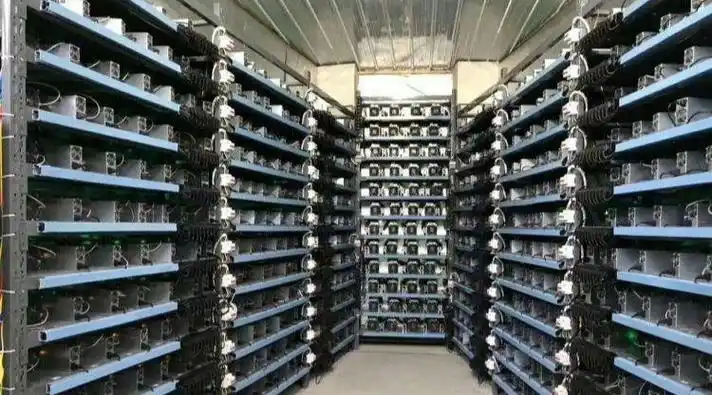Written on 08/20/2024 by Michael
Categories: News
Tags: Mining
In the rapidly evolving world of cryptocurrency, Litecoin mining has carved out a unique niche that blends innovation with opportunity. As digital currencies like Bitcoin (BTC) and Ethereum (ETH) dominate headlines, Litecoin (LTC)—often dubbed the silver to Bitcoin’s gold—offers an alternative mining avenue, balancing efficiency with potential profitability. Central to maximizing gains in this realm is the choice of mining machine hosting services, a decision that intertwines operational costs, hardware capabilities, and uptime reliability into one intricate puzzle.
Mining machines, commonly referred to as miners or mining rigs, are the backbone of any cryptocurrency mining operation. For Litecoin, these devices must be finely tuned to the Scrypt algorithm that underpins the currency, distinguishing them from the SHA-256 algorithm prominent in Bitcoin mining. These differences influence not only the type of hardware employed but also the strategies devised by miners and hosting providers alike. With powerful rigs chewing through complex cryptographic puzzles, mining farms—large-scale facilities housing rows upon rows of these machines—demand specialized attention concerning power efficiency, cooling, and maintenance.

Hosting services, therefore, are essential for miners who wish to avoid the headaches of physical machine management, fluctuating electricity costs, and inconsistent internet connectivity. Such services offer secure environments, competitive electricity rates, and expert technical support to optimize hardware performance. When it comes to Litecoin, where the competition and hashrate intensity fluctuate constantly, ensuring uptime and minimizing latency can be the difference between profit or loss. Hosting providers often bundle additional perks—such as remote monitoring, automated maintenance, or even wallet integration—to attract discerning miners searching for the best return on investment.
Cost structures among hosting services vary wildly. Some charge flat monthly fees, whereas others operate on a pay-per-use model, tying costs directly to electricity consumption or machine hashing power. Beyond sheer numbers, these pricing models reflect the underlying infrastructure—premium locations closer to renewable power sources might charge more, but yield lower energy costs, striking a balance that savvy miners carefully dissect. Moreover, some providers specifically tailor plans to accommodate various cryptocurrencies, from Litecoin and Dogecoin (DOG), which share the Scrypt algorithm heritage, to Ethereum with its separate mining demands.
Recognizing this, miners who are intent on diversification often seek multi-currency hosting platforms that allow seamless switching among mining different coins as market conditions dictate. The ability to pivot quickly, mining LTC on favorable days and shifting to DOG or ETH when their profitability spikes, demands sophisticated software and robust mining rigs capable of handling algorithm changes. Such flexibility underscores the need for highly adaptable hosting services that prioritize scalability alongside stability.
Moreover, large-scale mining operators frequently invest in bespoke solutions, deploying custom-designed hardware within expansive mining farms to capitalize on economies of scale. The concentration of thousands of miners in a single facility intensifies the need for top-tier environmental management—cooling systems, humidity regulation, fire suppression, and cyber-security measures become paramount. Mining farm operators must also navigate regulatory landscapes and energy policies, often shaping the cost-effectiveness of their operations more profoundly than market prices themselves.

Beyond pure hardware and hosting logistics, another critical element influencing Litecoin mining’s success is exchange integration. Access to liquid and trustworthy exchanges influences miners’ ability to convert mined coins into fiat currency or other digital assets. Picking a hosting service that offers streamlined exchange interfaces, portfolio tracking, or even built-in staking and lending options can dramatically enhance miners’ financial strategies.
Security considerations, too, cannot be overlooked. As cryptocurrency’s decentralized allure attracts a spectrum of participants, the risk of cyber-attacks, theft, and hardware tampering looms large. Hosting services must blend robust physical security with advanced digital protections—hardware firewalls, encryption protocols, and continuous monitoring—to safeguard assets. For miners, understanding the security posture of a hosting service may well tip the scales during decision-making, especially in an era where even high-profile exchanges have experienced breaches.
In conclusion, evaluating the best Litecoin mining machine hosting services necessitates a multidimensional approach. Cost is only one facet. Equally important are the technical specifications of mining rigs offered or supported, the agility of hosting platforms to adapt to varied cryptocurrencies such as BTC, DOG, and ETH, and the infrastructure strength of mining farms underpinning operations. Hosting providers that excel integrate seamlessly with exchanges, offer robust security protocols, and provide a responsive support system. For aspiring miners and seasoned veterans alike, striking this balance holds the key to unlocking the full potential of Litecoin mining amidst an ever-shifting digital currency ecosystem.
One comment on “The Best Litecoin Mining Machine Hosting Services: Comparing Costs and Features”
Leave a Reply to HoneyBit Cancel reply |



这个比较文章巧妙剖析了Litecoin挖矿托管服务的成本与特征,像一场惊险竞标赛,揭示最佳选择,帮助新手高效入场,却不忘提醒潜在风险。(28字)